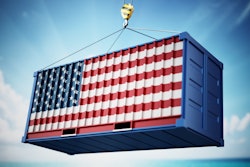
It’s clear the traditional linear model of manufacturing, selling, transporting and disposing of products is no longer sustainable.
Current resource consumption exceeds the planet’s ability to replenish itself. The amount of waste generated is unconscionable, with plastics and e-waste creating long-lasting environmental damage, in addition to the documented impact of greenhouse gas emissions.
Electronic waste alone contributes up to 50 million tons per year to the global waste stream. Most e-waste contains hazardous chemicals and metals (including lead, mercury and cadmium), which threaten human health and the environment. Plastics are another well-known hazard – some 12 million tons are poured into the ocean each year.
The environmental cost of producing and transporting products extends to the products’ end-of-life disposition. Too many products are designed to wind up in landfills, while some products suited to be reused or recycled are discarded instead. That’s a linear (or one-way) economy.
The circular economy is one way to address the inherent waste in the linear model. The circular economy is a loop that connects the beginning and the end of the product life cycle. Products can be reused or repurposed for extended life. This approach reduces the energy and resources consumed to create a new product and lessens the flow into the disposal stream.
In some industries, the circular economy has been a way of life – e.g., vehicle engines and components like alternators and starters are rebuilt and reused regularly. Shoe companies have launched return programs for some footwear products.
To embrace a circular economy, companies must develop the analytical insights and reverse logistics capabilities to manage the product lifecycle. While it’s a step in the right direction, we’re moving beyond the circular economy to build a more sustainable supply chain for the future.
Consider product-as-a-service
Companies should consider the product-as-a-service (PaaS) model to make a true impact on the environment. The PaaS model is built on selling the services and outcomes that a product provides rather than the product itself. Jet engines have been marketed through hours-of-service arrangements, where the manufacturer owns and maintains the assets. It’s similar in some ways to vendor-managed inventory for supplies, such as tooling in a machine shop. The vendor ensures the shop has the tooling in stock for lathes and mills to maintain production.
PaaS is showing up in other areas, such as lighting services. For example, companies don’t have to buy lightbulbs or ballast anymore. Instead, they contract with a service provider to develop a lighting plan and provide installation, support and maintenance. The relationship is built on a service-level agreement (SLA). The user benefits from lower overhead in maintenance and energy use, and the provider manages the products’ lifecycle to ensure the products don’t end up in a landfill.
With the model based on SLAs, customers receive better service because replacement parts and maintenance personnel are situated to ensure fast response for business continuity. The provider can extract value from the out-of-service parts by recycling or repurposing whenever possible.
Transition to PaaS with technology
It’s next to impossible to manage the complex PaaS model manually. Technologies like the Internet of Things (IoT), edge computing and artificial intelligence (AI) empowers companies to rethink how materials and parts are sourced, distributed, used, maintained and upcycled to prioritize the service supply chain process.
Transitioning to the PaaS model requires a deeper focus on keeping the product or service running, which means an increased focus on service, repair and maintenance. However, companies that want to embrace the new model find their supply chain visibility to be inadequate. Systems and software are not compatible or integrated, so it’s difficult to optimize the outbound and inbound service supply chain. This leads to high inventory costs, penalties for missing SLA commitments, complex logistics and administrative overhead.
With predictive analytics and other technologies, providers can streamline and automate processes such as predicting when a business will need a new part before the piece breaks. That insight results in more efficient logistics management, reduced energy costs and more sustainable supply chain practices. For example, the service supply chain can positively impact the environment since it promotes the reuse of parts instead of discarding them. In fact, 1 ton of e-waste return avoids 1.4 tons of greenhouse gases.
The goal is to optimize recovery by facilitating, tracking and expediting the return of assets from the field or customer. Your organization can dramatically reduce costs while improving customer experience. It’s a true circular process.
To build PaaS offerings, partner with providers that deliver end-to-end service visibility and insights to cut across the silos that exist in current service supply chains. Consumers and business are realizing they don’t want to manage and maintain devices and would prefer to contract with the original provider or a third-party service for outcome-based solutions.
Transform your business
It’s a transformation in the way in which you go to market. Your business isn’t about selling product any longer. It’s about selling the outcomes or services of those products. Your manufacturing processes may not change much, but the way in which you interact with customers and the product lifecycle will look very different.
It’s not without risks – success depends on anticipating long-term contract issues, scaling up capabilities and overcoming the traditional linear mind set.
Companies that adopt the PaaS model for value-added services are positioned to achieve higher operating profits, competitive differentiation and greater customer focus. The results drive greater sustainability practices, cost savings and revenue growth while supporting a superior vendor and customer experience.

















![Pros To Know 2026 [color]](https://img.sdcexec.com/mindful/acbm/workspaces/default/uploads/2025/08/prostoknow-2026-color.mduFvhpgMk.png?ar=16%3A9&auto=format%2Ccompress&bg=fff&fill-color=fff&fit=fill&h=135&q=70&w=240)